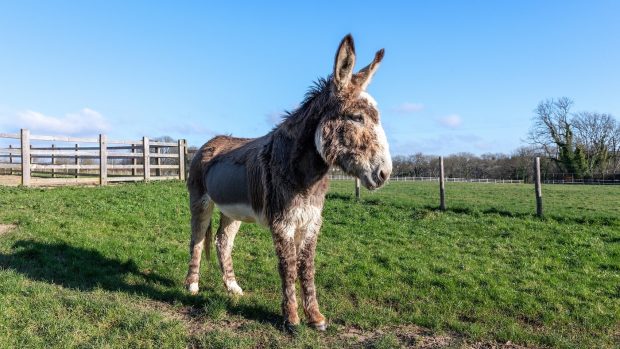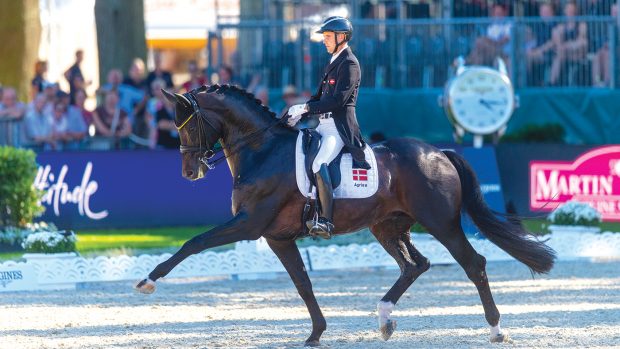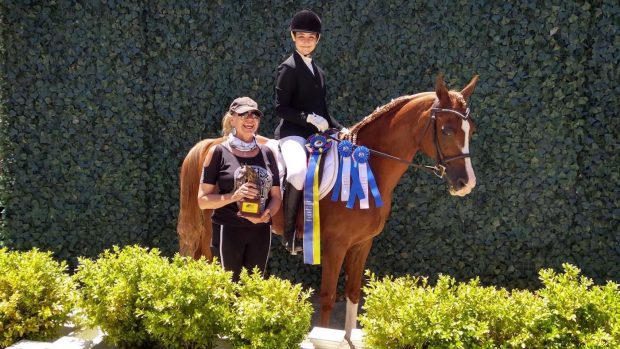While there are many theories regarding the causes that can lead to cases of colic in horses, some have not been proven. So what has been shown scientifically to be associated with colic, and how can we use this knowledge to reduce the risk of it occurring?
Causes of colic in horses
Horses who have previously suffered from an episode of colic have been shown to be at increased risk of the condition recurring; in one study, 43% of horses with colic had suffered from it before. Colic doesn’t seem to be associated with a particular breed, gender or age group, but studies have shown that certain types of colic are more common in certain groups.
Parasites
Some studies reported that the wormer or worming programme used had no effect on colic, whereas others showed horses were at increased risk if they were not wormed regularly. High tapeworm burdens have also been associated with increased risk of colic due to ileal impaction. In one study, recent worming was not associated with colic, whereas another reported increased risk in the week after worming.
So what does this all mean? We know parasites can cause colic and that killing off large numbers of parasites could irritate the gastrointestinal tract, so it would appear to be sensible to prevent such large numbers building up in the first place.
Seasonal factors
Scientific studies have not found any significant association between weather conditions and colic. Spring and autumn are peak times for colic in general in our hospital population, supporting findings from other studies. Changes in pasture, stabling and feeding patterns are more likely during these months. Large colon impactions are consistently more common over the autumn and winter. This may be associated with stabling for longer periods and feeding forage during this time.
Feeding, stabling, exercise and water
The evidence supports long-held beliefs that feeding good quality forage or concentrates, keeping feeding routines consistent and making any changes in feed type and quantity gradual — for example, over a few weeks rather than a few days — reduce the chances of colic occurring.
Increased duration of stabling, particularly in horses stabled for 24hr per day, has been shown to be associated with increased risk of colic due to large colon impaction or distension.
Sudden box rest due to injury may be essential for recovery, but this information is useful; by monitoring a horse’s feed intake and faecal output, impending problems can be identified at an early stage.
The relationship between turnout and risk of colic requires further work, but one study demonstrated that horses turned out for reduced periods of time or put on to a smaller pasture were at increased risk of colic.
A link between intense exercise or change in exercise routine and colic has been shown, but in some studies this may be associated with other factors, such as stabling, limited periods of turnout, feeding and transport.
Work performed in the USA has demonstrated that horses are at increased risk of colic if they do not have a regular supply of water. Although this would appear to be common sense, it highlights the importance of ensuring they have continual access to fresh, clean water.
Horses and ponies who had their teeth checked regularly have been shown to be at reduced risk of colic due to large colon impaction/distension. Regular (six-12 monthly) examination of teeth to identify whether dental treatment is required is sensible.
Transport
Some studies have implicated recent travel with colic. This may be related to the transport itself — some individuals appear to be particularly stressed by travelling — or other factors linked to it. For example, horses may be moved to a yard where stabling and feeding routines are different, and it could be these factors, not travel, that are responsible for colic.
Based on scientific knowledge, it would be sensible to minimise these changes (particularly in individuals prone to colic) by offering water regularly, taking the horse’s usual feed and making any changes in feeding routine gradual.
Given that horses are designed to be “trickle feeders” and that those in the wild spend a large proportion of their time grazing, it is perhaps not surprising to discover the role factors such as feeding and stabling may play in the development of colic.
So what does it all mean?
A balance has to be found between how evolution has designed the horse and how they can adapt to cope with modern life. Some factors associated with colic in these scientific studies have long been thought to be important, whereas we are now discovering the role previously unidentified factors may play. To make it more complicated, we are discovering that different types of colic are associated with different “risk factors”, so further research is important.
So can colic be prevented? Many inter-related factors seem to play a role in its development and there appears to be no single way to prevent it. There are also horses who have not been exposed to any risk factor and develop colic for no apparent reason.
Although many horses never develop colic, prevention is always preferable. Most importantly, in those individuals who appear prone to colic, this information can help identify the potential cause and minimise the chances of the condition occurring again.
This veterinary feature was first published in Horse & Hound magazine.




